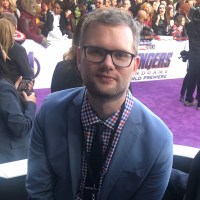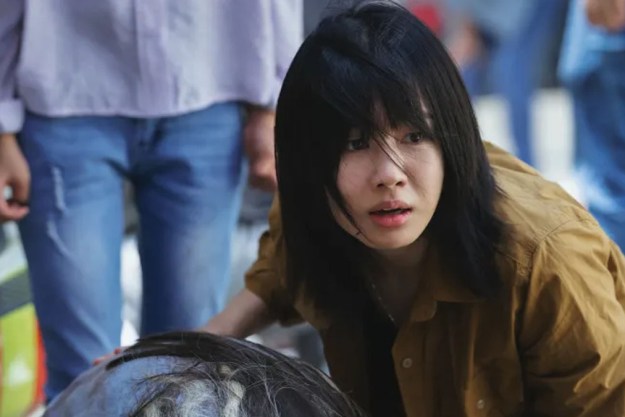Ted Braun has spent most of his career as a documentarian focusing on tough subject matter. In Darfur Now, Braun examined the genocide in the Darfur region of Sudan through six individuals, including actor Don Cheadle, a California activist trying to raise awareness, and citizens in Darfur who react in different ways to the political turmoil around them. In Betting on Zero, Braun documented Herbalife and the short stock controversy of the 2010s.
His next documentary, 2022’s ¡Viva Maestro!, might seem like a detour for Braun as it focuses on the popular classical music conductor Gustavo Dudamel. Yet in an interview with Digital Trends, Braun reveals the appeal of documenting a famous artist, the advice he took from famed documentarian Frederick Wiseman, and the essential value of art as a way to bridge political, cultural, and social divides.
Note: This interview has been edited for length and clarity.
Digital Trends: What prompted you to make a documentary about Gustavo Dudamel?
Ted Braun: I had just finished a feature documentary called Betting on Zero, which dealt with allegations of a global fraud of huge proportions. It was a tough, complex, dark trip into a very cynical world. As I was finishing that film up, one of the producers of the film thought Gustavo Dudamel would make a great subject for a feature documentary. I wanted to put the problems of the world behind me and focus on a film that was devoted to a person committed to bringing beauty into the world.
What access did you have to Gustavo? Was everything on the table in terms of documenting his personal and professional life?
Our focus was on him as a musician. Like a lot of public figures, he tries to maintain a certain amount of privacy for his loved ones. And we weren’t really interested in his private life. We wanted to explore the magic of him as a musician and uncover the sort of special connection between him and the orchestra he leads. We wanted to emphasize the importance of bringing art into the world.

How long did it take you to film ¡Viva Maestro!?
It’s been a long odyssey. We began filming Gustavo in February of 2017, imagining the film would come out in spring of 2019. About six weeks after we started filming, there was a tremendous crisis that erupted in Venezuela that redirected the course of the film and extended the shooting and editing periods well beyond what we’d anticipated.
In approaching making ¡Viva Maestro!, did you have a concrete plan about what kind of documentary it would be like?
There is a great and glorious tradition of archival documentary filmmaking, especially music documentaries, where you sit down with the subject, you interview the subject, experts [weigh in], and then you see clips from their past. I started off making those kind of films and I yearned to plunge audiences into people in the middle of their lives. They connect with, and experience characters, in much the same way you experience and live with a character in a scripted film. Because it’s a documentary, you and the filmmakers genuinely don’t know quite where things are going to go. And that sense of anticipation, uncertainty, and surprise is very infectious and compelling as an audience member.
As a filmmaker, that’s what I’m aspiring for: That same kind of emotional engagement and that same sense of unexpectedness and surprise that that drive people to go see scripted movies. That’s what we set out to do with this film: We wanted to immerse audiences in Gustavo’s life and his imagination and really get inside his head.
The documentary incorporates animation in several sequences to showcase Gustavo’s world and his inner thoughts. Is animation something you want to use more in your next documentary?
It depends. One of the great things about making a documentary film is that you’re encountering a slice of life in a world that is either new or the perspective is new. I grew up as a classical musician. I nearly left Amherst College to go to conservatory and play in an orchestra for a living. I was a bassoon player, so I knew that world. But Gustavo was completely new to me, as well as the Simón Bolívar Orchestra, Venezuela, and the dynamic of the L.A. Philharmonic. So, I had some familiarity with the world, but it was largely new to me. One of the privileges of this profession is that you can plunge into something new like this.
If you’re honest as a filmmaker, you take that privilege with some integrity. You have to respond in different ways. You can’t take the same approach to each film. You have to kind of listen and attend and find a form that suits you. So if animation makes sense for the next project, I would love to, but I have to wait and see. It’s increasingly a kind of fundamental part of the equation. All three of the feature docs that I’ve done have in different ways used animation as a tool for storytelling. And I love it.
You can come to a project with certain ideas and certain perspectives, and once you get into it, those change because of what you find out about it.
Absolutely. I got to know the legendary documentary filmmaker Frederick Wiseman a little bit. He advised me not to go to film school. [Laughs]. At that time, I was interested in scripted films and had no interest in documentaries. And he couldn’t understand that. He said “documentary films are so much more interesting. They’re so athletic.”
That remark didn’t penetrate me at the time. But years later, when I eventually found my way to making documentary filmmaking, I realized, “Oh, he’s absolutely right.” You have to be responsive like an athlete to what is happening around you. Using your storytelling skills in that kind of a setting is thrilling because you have to respond like an athlete in the moment and it’s exhilarating.

Orchestral music can sometimes be difficult to film. What was your approach to documenting Gustavo’s conducting sessions? Did it change depending on the piece he was conducting?
That’s an excellent question. I’d love to talk about it in three ways.: How we actually shot it, how we recorded the audio, and how we edited it after we filmed everything we wanted.
When we shot the film, the most important thing we needed to do was to get the audience into Gustavo’s shoes immediately so that instead of just watching this guy waving his hands around, magically pulling sounds out of an orchestra, the audience can see a conversation between him and the orchestra trying to get a piece to sound the way they all wanted it to sound.
During rehearsals, we made sure there was a handheld camera shooting very closely around Gustavo that could respond to what he was doing and make the audience feel like they were seeing what Gustavo was seeing. We also had another camera that was focused on the orchestra because conducting an orchestra is a conversation between a conductor and an orchestra. Then we had one camera at the back of the rehearsal hall that was always looking at Gustavo and one camera that was wide and looking at the orchestra. We had some editorial options that gave us Gustavo and his point of view, as well as the scope of the orchestra and the space they were rehearsing in.
What about the audio?
The audio recording was fascinating. Because this was a film about beauty and art, we wanted it to sound lush and spectrally beautiful. And doing that with an orchestra typically requires a very complex audio recording setup.
In halls where they had an existing microphone situation, we took advantage of that. In others that didn’t have that, we had a couple of really great sound recordists, John Zecca and Theresa Radka, set up mics in the hall to capture the blended sound of the orchestra. We also wanted that subjective thing where the audience was hearing the way Gustavo was hearing the orchestra.
When you’re shooting a documentary, you have a mic mounted on the camera in case you get separated from the sound recordists. That mic is very directional, and it picks up a very narrow spectrum of sound. If I’m talking to you and the camera’s pointing at you, it really does a great job of picking you up but everything else sounds like a blurry mush. When we looked at the first dailies from the rehearsals in Caracas, we noticed that as the camera swept by with that focused microphone, we got this super-intense, subjective sound of panning across different instruments like violins, violas, and cellos. We realized that’s the way Gustavo’s hearing it. He’s not hearing a beautiful, blended sound. He’s looking at the violas, listening to the violins, or picking up the bassoons in the back.
We realized we could get an isolated sound that’s going to mimic and sort of mirror what Gustavo is hearing. So we mounted every single one of our documentary cameras with these focused microphones and recorded those tracks so that we always had the chance to capture the subjectivity of Gustavo’s unique POV.
That brings us to the editing portion.
With the editing, we had a storytelling obligation to alert the audience to what Gustavo was trying to do. If they can’t figure out what he’s doing, they’re going to get lost.
We found that with each new piece or each new rehearsal, we could cue the audience to pay attention to one thing, one specific thing, Gustavo was trying to get out of the orchestra or to develop with the orchestra in a particular piece. When Gustavo conducts Beethoven’s Ninth Symphony, he’s talking about bringing a message of brotherhood and you start listening for that. When we get to the new piece by the wonderful Mexican composer Arturo Márquez, Gustavo talks about that strings and winds are also percussion instruments, and he taps out the percussive rhythm. And when we get to those rehearsals, you’re hearing the strings being used like percussion instruments. That’s an editorial choice. That’s a storytelling choice that locks us into that subjective point of view of Gustavo. And that makes the audience feel like they’re participating with him trying to get strings and winds to work like percussion instruments.
We were not making this film for classical aficionados. Of course, we want them to love it. But we really believe with Gustavo’s magic and the power of cinema that we could reach a wide range of people.

What role did Gustavo have in shaping the narrative of his life? Was there anything that he wanted to leave out?
I worked with Gustavo as I’ve worked with all of the subjects of my films: Cooperatively. I don’t show up unannounced. I don’t try to put them in uncomfortable “gotcha” situations. I really try to agree upon an approach to the film and work collaboratively. While we were filming, we were very much in conversation and collaboration. You can’t show up with a film crew and start shooting a 100-person orchestra like the Berlin Philharmonic without making arrangements, right?
Right, right.
I think as a filmmaker, you have a special set of obligations when you’re making a cooperative film about one subject. I had never screened a cut of the film to a subject before, but we did screen a cut of the film for Gustavo. He was largely very responsive to what we’ve done and happy about it. There were some issues that we needed to be sensitive about such as how the film would be received globally. We took those into consideration.
What do you want people to take away from this film?
First and foremost, I hope they’ll take away what an extraordinary musician and person Gustavo is and how resilient and committed he is to art’s transformative power. I also hope that they’ll see that in a world that’s fractious and divided, art and beauty can be a response to conflict because it asserts our shared humanity. I think that’s what Gustavo does in his work. After some soul searching and encountering obstacles during the course of this film, that’s where he returns. I think that’s very much in line with what we as a filmmaking team wanted to accomplish. We believe in the communal value of art. That’s why we want people to come to the movie theaters to see it.
¡Viva Maestro! is currently in select theaters.




